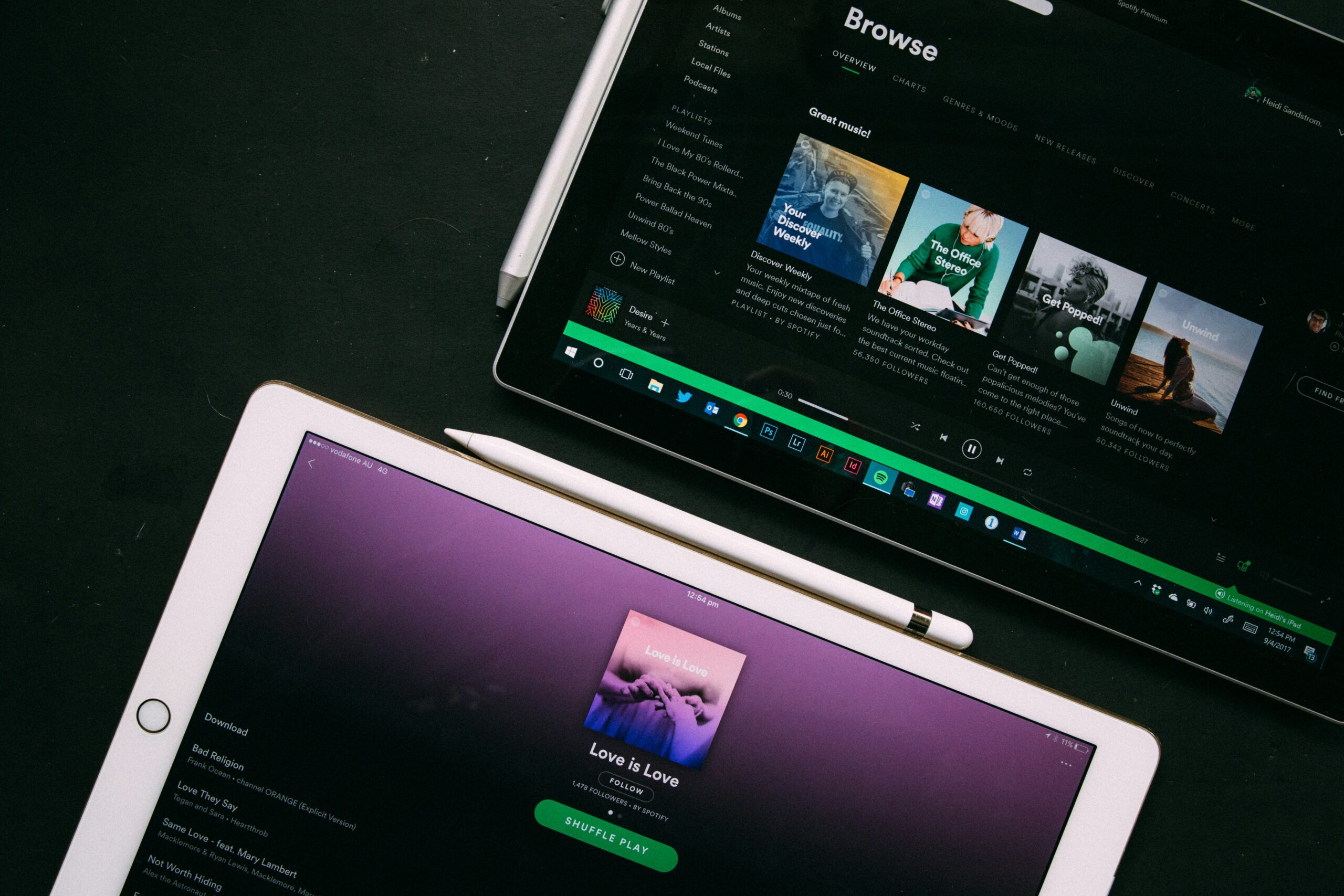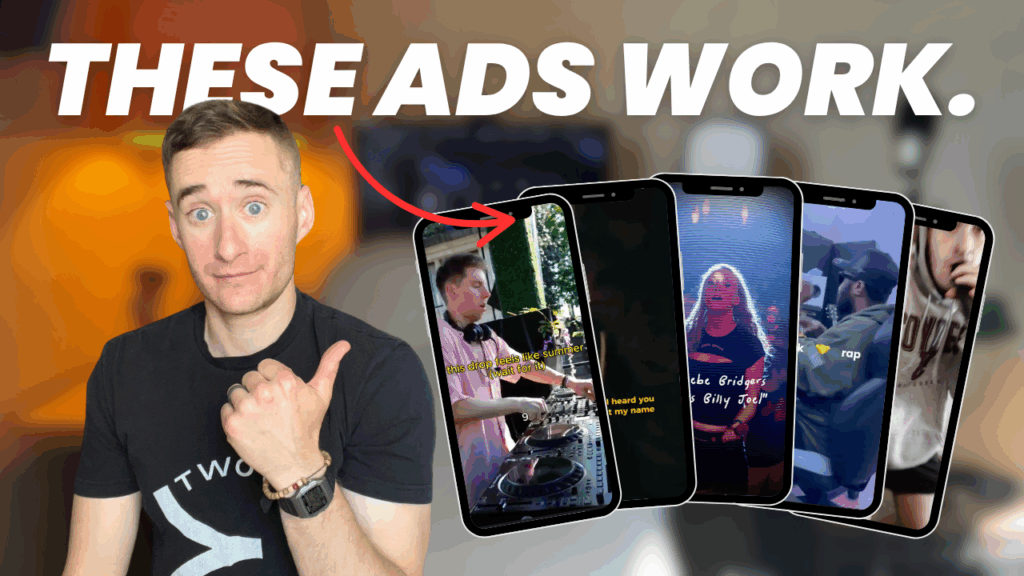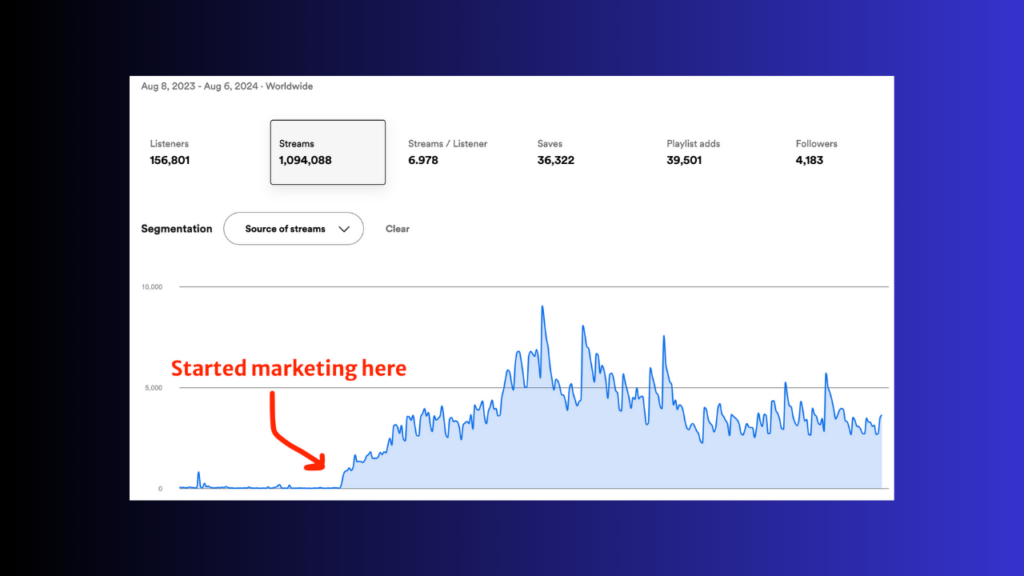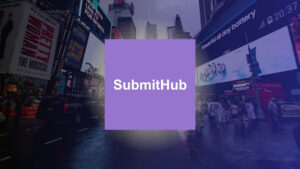I’ve run ads for 36 playlists over the past couple of months.
You may remember that I launched this as a service around the end of January. The premise is that artists send me a playlist they’ve created, and I run Meta ads to it to drive streams and saves.
Ideally, the artist is left with a popular playlist that they control, which can lead to longer-term streaming growth compared against traditional playlisting services.
(Always worth noting that you can absolutely do this on your own, and in most cases I’d recommend that you do. Running your own ads is just way cheaper than paying an agency. But as I’ve found out, there are at least 36 artists who prefer the extra cost for the convenience of not having to bother about Meta.)
When I launched the service, I figured I might sell a couple of people on it; as it turned out, I sold like 20 in the first week. I’d only ever had like 15 clients at once prior to this, so the influx of roughly double that load meant I had to do some adjusting on the fly.
And in honesty, it hasn’t always been pretty.
To be blunt: A few of my campaigns have failed utterly. And because I have a guarantee attached to the service (basically 300 playlist followers per $150 in ad spend), I’ve had to keep spending my own money in ad budget to deliver the results I’d promised.
Now, it’s also true that a couple of my campaigns have skyrocketed clients’ results like a ball off the torpedo bat of Aaron Judge. It’s really been a mixed bag.
So last week I was combing through my first 36 campaigns, trying to figure out what worked and what didn’t. I wanted to spot patterns in the high performing campaigns, with the hope that they’d help me repeat the good results more often.
Here’s a quick breakdown of what I learned.
1. Mainstream-ish music works best.
I’d classify three out of my top five playlists as pop.
This isn’t really a surprise; as suggested in its name, there’s a large audience for pop music. In general, it’s just cheaper and easier to reach a large, mainstream audience than it is a small, niche audience.
This isn’t to say that ads for more niche playlists don’t work, though. Two of my top playlists were in the folk genre (and I mean folk as in the sort of songwriters who’d find Top 40 stations anathema, not as in Taylor Swift’s folklore).
But some of my worst campaigns were for folk music, too. It was definitely more hit and miss – whereas the pop playlists were all hits.
Here’s the list of genre tags for my top 10 campaigns, for reference.
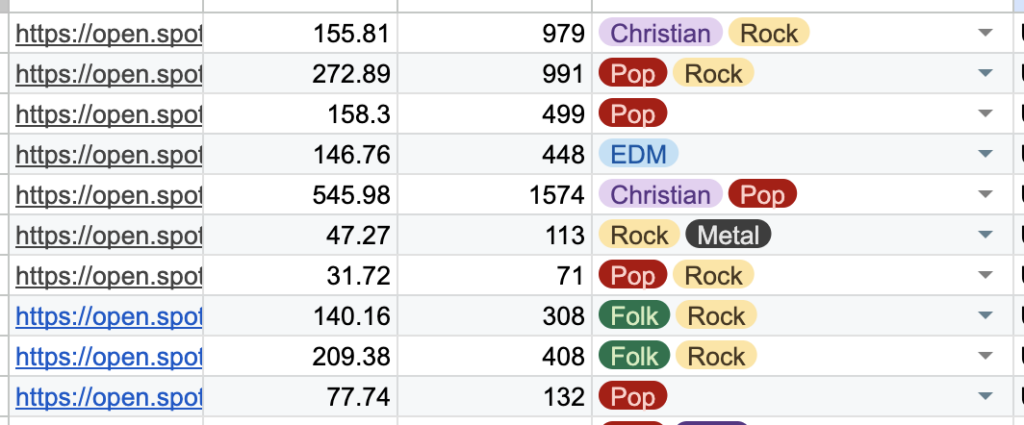
2. Simple videos work best for ads.
In almost every campaign, the winning video (which invariably ends up driving 98% of results) is some version of what I think of as a “playlist scroll” – basically, a screen recording of a phone scrolling through the playlist.
Here’s an example.
We’ll usually throw some sort of text on the screen to appeal to whoever we think the audience is.
I think the reason these videos work so well is that they’re so clear; it’s immediately obvious that it’s an ad for a playlist in a certain genre, and if you happen to be a fan of that genre, hey, why not click?
It’s far from clever, but nine out of ten times, this sort of ad wins.
3. The quality of the song makes a huge difference.
I’ve written before that I think the quality of music is objective. Don’t panic, I’m not going to hop back up on that soapbox here – but I am going to claim that the better a song is, the better the ads for it will perform.
More specifically, the better a song fits within the context of its playlist, the better ads for it will perform. In other words, if you’re advertising a mainstream rap playlist, but the song you’re using would sound out of place on Rap Caviar, then the ads will suffer.
4. So does the playlist cover art.
I went through and categorized the cover art for each of the 36 playlists I’ve run according to the following highly technical scale:
- Legit (looks like a designer made it)
- Un-legit (looks like your uncle made it in Canva)
- Doesn’t exist (the artist literally didn’t add a photo)
Six out of my top 10 campaigns used cover art I’d qualify as legit. The other four campaigns had no cover art.

There were 11 campaigns with cover art that I’d qualify as un-legit – and most of those performed pretty poorly.
The lesson is clear: If you’re going to pay to run ads, then take the time to create decent cover art. Your campaign will thank you.
A few final notes in bullet-point form…
I’m running out of time and caffeine, but I wanted to share some of the more granular data points from my review. Here’s a quick bullet list:
- My average cost per follower was $0.60 of ad spend. But this was heavily impacted by two outlier campaigns, one of which wasn’t measured correctly (long story). With those taken out, my average cost per follower was $0.74. The median was $0.79.
- I spent $6,037 in ads and drove 10,123 playlist followers.
- My lowest cost per follower was $0.12. My highest was a whopping $4.16.
- There was basically no statistical correlation between how high an artist placed their own song and how well their ads performed. Some artists placed their song first on their list; some buried it below the top 10 songs. I spent way too long plotting this data point out for every campaign, only to find that it made no difference.
I wasn’t able to draw as much from the streaming data, because more than half of the artists didn’t share Spotify for Artists access with me. The 17 who did recorded a total of 52,150 streams from my playlists. But that number, too, was heavily impacted by a couple of outliers.
I’ll stop here.
I realize this is more of a hodgepodge of information than a coherent analysis. Sorry. In large part, that’s because my own brain (which isn’t mathematically inclined) is still chewing on this stuff.
But despite the hodgepodge, I hope it’s helpful, anyway – or at the very least kind of interesting as you think on your own marketing.
As always, here’s wishing you good luck.
– Jon

